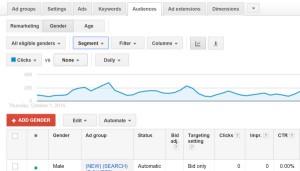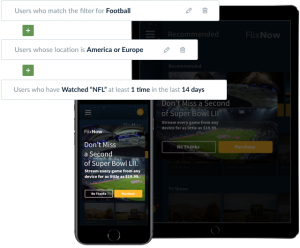
For those just joining my blog series CSM from the Trenches, welcome. In this series, I discuss trends, best practices, and advice for frontline customer success managers (CSMs).
Being on the CSM frontline allows us to directly influence the success of our clients. I love that; as our clients are successful, we’re successful. Let’s move forward with this week’s blog post!
Segmentation Defined
Each company might have a different use for segmentation – it could be how customers are tiered, products are sorted, or annualized recurring revenue (ARR) is distributed.
For the purpose of this article, I’ll define segmentation as the ability to focus on the right customers at the right time. Let me explain, CSMs keep track of many customer interactions, ranging from customer health (Pulse) to various engagements. Imagine defining segmented views for “at risk” or “renewing” clients based on your own criteria? A dynamic approach to viewing your book of business opens the doors for endless possibilities, which can help you develop authentic, intelligent relationships with you customers.
4 Segmented Strategic Views for Frontline CSMs
ClientSuccess segmentation enables CSMs to set their own filters to create and save segmented client views, where clients are automatically added or removed as conditions change.
Here are 4 segmentation strategic views for frontline CSMs:
1) Segmentation by Customer Health or Pulse
Pulse-related segments are often be the most valuable, because you can clearly see certain client profiles. Consider the following scenario: your CEO (or some other executive) comes to you wanting to know clients who have expressed a desire to churn and who will renew in Q1 2017. Where do you begin?
ClientSuccess has a six-point health scale ranging from Severe Risk to Extremely Satisfied. As part of our Pulse Plan, teams set some general internal guidelines for customer success managers as they determine customer health. This creates organization-wide consistency on the health of its customers. One point we recommend is that Severe Risk be used to denote a client whose expressed their desire to churn. With a few quick filters, CSMs can create and save a segmented view for Q1 2017, “Severe Risk” customers.
Another thing to consider is how often you want to set Pulse. Depending on how frequently you engage with clients, you’ll likely already have an idea in place. I’ve personally created a segment for when Pulse hasn’t been set in more than 30 days. This reminds and gives me the opportunity to look at the relationship we’re forming with clients. If a client is “Very Satisfied”, are they still “Very Satisfied” 30 days later? Do I need to step in and continue to advocate for them? Is there additional value I can bring to the relationship? It’s also beneficial for your manager and executives to be notified when a client’s pulse has been marked to “Some Risk” or below. This flag works to prevent surprises later down the road.
2) Segmentation by Engagement
Along those lines, if a customer relationship experiences extended periods of no communication…that is most definitely something CSMs want to be aware of. The last thing we want is for a client to slip through the cracks because we’re swamped (or simply don’t hear from them).
Depending on your customer lifecycle, you’ll likely have a specific cadence expectation for your clients. Regardless, we like to keep track of customers where it’s been longer than 30 days since they’ve engaged with us (ie phone call, on-site, or even an email received).
Segmentation within ClientSuccess makes it easy to see a list of these customers. We could even get more specific and see those who haven’t engaged in the last 30 days, are renewing in the next 90 days, and who are above a certain ARR. This helps the frontline CSM prioritize and become more proactive in where their time and effort is being spent.
3) Segmentation by Usage
If you’ve been following my blog, you’ll know I don’t believe usage is always king. However, I do think the data can help point us in the right direction. That being said, frontline CSMs often have a primary metric (ie log-ins) to track and/or report on. There’s likely some sort of date range involved, and you might want to differentiate between average or total numbers for the metric
With ClientSuccess’ dynamic segmentation, users are able to create views based on usage. Want to see customers with a downward usage trend? Easy. The filter for usage makes this possible. As with other segments, you could get more specific and add additional filters for renewal date, pulse, or engagement.
4) Segmentation by Renewals
In most of the teams we’ve encountered, it’s the CSM who manages renewals. ClientSuccess has an entire renewals screen for the CSM to see their quarterly renewals…along with a breakdown of open, renewed, and terminated subscriptions…as well as the ability to forecast.
The renewal date, however, is another filter users can take advantage from in the ClientSuccess home Client Screen. Combining some of the other criteria previously described, you could have an “at risk”, “renewing in the next 90 days” view of your customers. This can help you take appropriate action before it’s too late
As you consider segmentation, I hope these 4 strategic views will help you stay proactive in the manner in which you engage with and understand your customers. In turn, you’ll have a clearer perspective on what’s actually going on with them.
Learn more about how ClientSuccess can help your company develop a strong customer success methodology and strategy with easy-to-use customer success software by requesting a 30-minute demo.
Business & Finance Articles on Business 2 Community(31)







